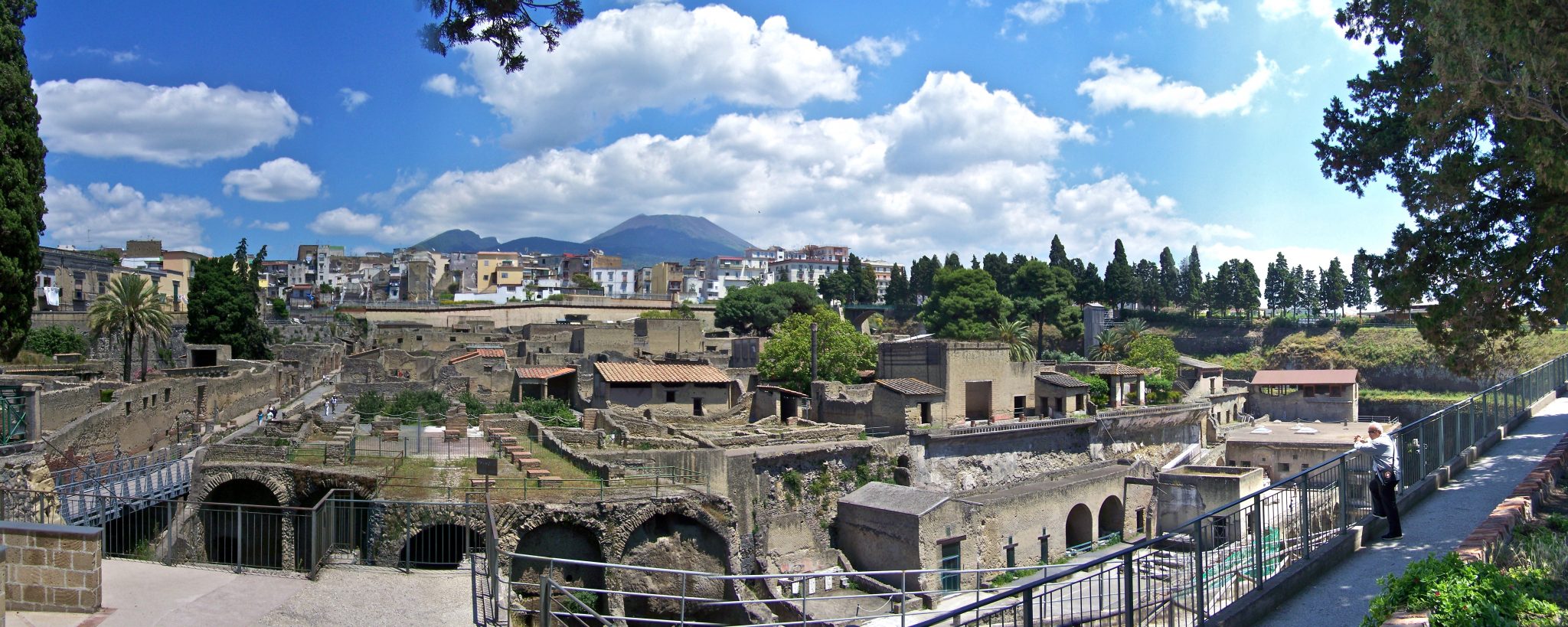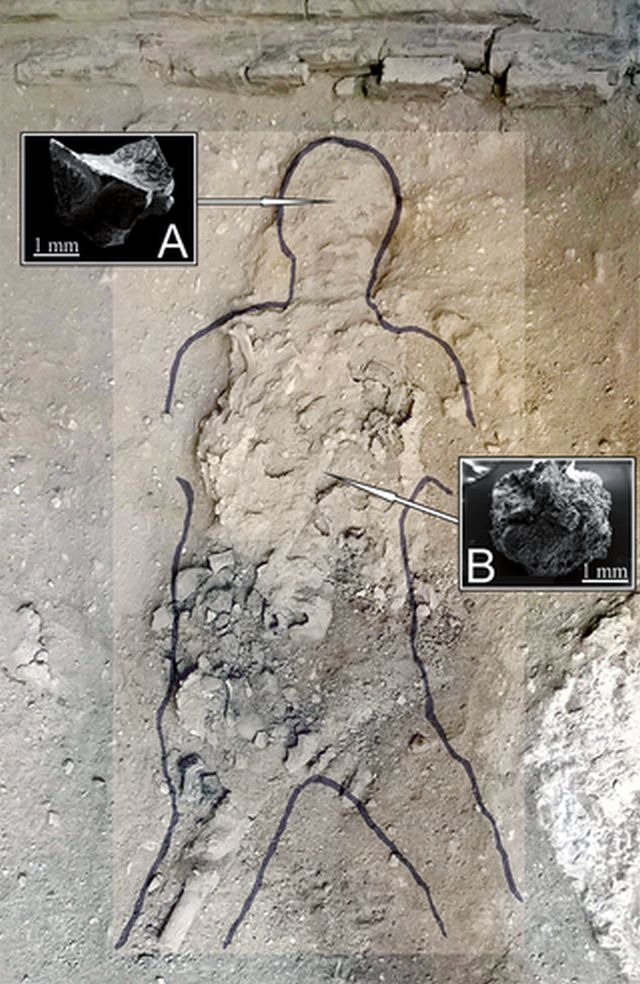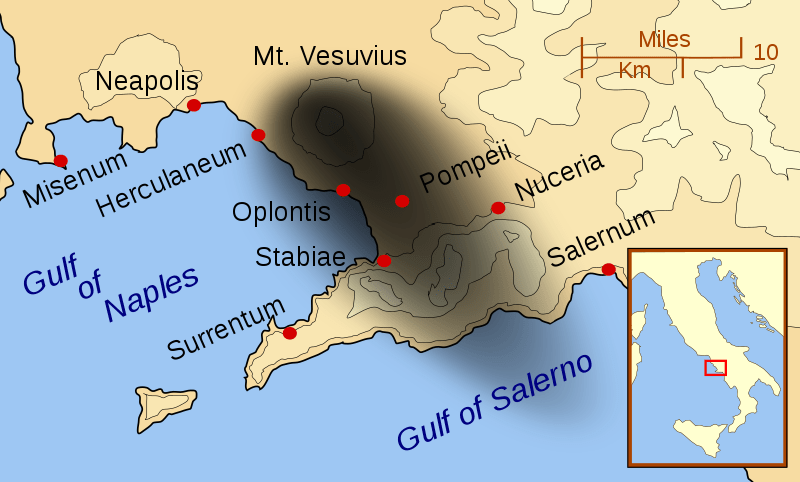I recall the C’s saying “it’s not where you are but who you are”.I have a somewhat personal question:
Do you think it is a good idea to stay on the Canary Islands in the coming years, taking into account the probability of Earth Changes?
The islands are not on any fault line, unlike the Ring of Fire, and most of them have been erupting maybe once a century or so.
There is also the possibility of a megatsunami through a massive landslide on La Palma, though there are wildly different estimates at how likely or massive it would be.
I really like the place itself and so far do not feel any urge to move away, but would like to hear what others think.
You are using an out of date browser. It may not display this or other websites correctly.
You should upgrade or use an alternative browser.
You should upgrade or use an alternative browser.
Volcanoes Erupting All Over
- Thread starter Laura
- Start date
I have a somewhat personal question:
Do you think it is a good idea to stay on the Canary Islands in the coming years, taking into account the probability of Earth Changes?
The islands are not on any fault line, unlike the Ring of Fire, and most of them have been erupting maybe once a century or so.
There is also the possibility of a megatsunami through a massive landslide on La Palma, though there are wildly different estimates at how likely or massive it would be.
I really like the place itself and so far do not feel any urge to move away, but would like to hear what others think.
Hi axj, others might know better, so just my two cents: I'd advise to keep an eye on any events happening in the Canary Islands. When there are clear signs to move, you could network here and perhaps move elsewhere. I agree with others that where we are doesn't matter and it's difficult to know where exactly the danger zones will be, but it can be helpful to regularly check for developments (unless you're already doing that!). For example, a search on Sott.net revealed the following events in the Canary Islands:
- A massive sandstorm in Feb this year
- Huge waterspout last year
- Last year, a report came out that said that seismic activity has soared 360% since 2016
Note the following in the article:
- Two years ago: Waves up to six metres high caused a considerable amount of damageThe Canary Islands is a seismic and volcanic active region in the world. But how to explain this dramatic increase (about 28%) in earthquakes?
Technology? Yes of course but it cannot account alone for such a spike! According to experts, Mount Tiede is not about to erupt, although most of the quakes measured hit close-by.
But there is an underwater fault between Gran Canaria and Tenerife. This is where almost all of the quakes struck. According to latest data, the underwater fault is currently inactive... But what if it started 'living' again? Yes, the Teide is near!
There is something brewing in the area, but scientists do not want to alert the masses! Be ready and get prepared!
- Two years ago: Fears growing over possible eruption of Canary Island's Mount Teide, nearly 300 earthquakes have shaken the island within 10 days
- Three years ago: Scientists on alert as underwater volcano Tagoro in the Canary Islands bursts into life
So, I would particularly keep an eye on these earthquakes and possible volcano eruptions. It might also be helpful to have a plan in mind when things do get to a dangerous level, such as places you could go to. No need to panic, though! Just keep an eye open on any noteworthy signs. Hope this helps, perhaps others will have a better idea on the possible danger level in that region.
Mexico's Popcatepetl volcano has erupted, spewing ash and smoke 600 meters into the sky.
Mexico's El Popo volcano blasts plumes of smoke, ash high into sky
15 August 2020
Mexico's El Popo volcano blasts plumes of smoke, ash high into sky
15 August 2020
Dramatic time-lapse footage shows latest eruption of Mount Sinabung in Indonesia
Stunning time-lapse footage shows Indonesia’s Mount Sinabung erupting on August 18, 2020, sending thick plumes of ash into the air. The volcano located in North Sumatra, has erupted several times already this month. No injuries or major damage have been reported.
Also this month:
- Mt. Sinabung in Indonesia erupts yet again, spewing ash 2,000 meters high
- Another major eruption forces evacuations from around Mount Sinabung in Indonesia
- Deep M6.9 earthquake strikes Banda Sea off Indonesia
- Twin shallow 6.8 & 6.9 magnitude earthquakes strike Indonesia
See also: Is there a connection between cosmic rays, earthquakes and volcanic eruptions?"During the next solar cycle, we could see cosmic ray dose rates increase by as much as 75%," says lead author Fatemeh Rahmanifard of the University of New Hampshire's Space Science Center.
Explosions at Volcán del Fuego (Fire volcano), Guatemala.
Constant activity at Sangay volcano, Ecuador
#INFORMATION: The ECU 911 monitors the #Sangay volcano, which displays the #emission of a column of #gas and #ash from approximately 1,770 meters above the crater level and the descent of pyroclastic material. It is warned that ash may fall in nearby cantons
#INFORMATION: The ECU 911 monitors the #Sangay volcano, which displays the #emission of a column of #gas and #ash from approximately 1,770 meters above the crater level and the descent of pyroclastic material. It is warned that ash may fall in nearby cantons
More explosions from Volcan del Fuego, Guatemala
Explosion at Sangay Volcano, Ecuador.
Ojos de Aguila @cscgye captures ash fall from the eruptive process of the #Sangay volcano on the National Unity Bridge, we ask the population to take precautions.
#WARNING: Ashes fall from the volcano #Sangay on the road #Jujan - Guayaquil.
Take precautions.
Ojos de Aguila @cscgye captures ash fall from the eruptive process of the #Sangay volcano on the National Unity Bridge, we ask the population to take precautions.
#WARNING: Ashes fall from the volcano #Sangay on the road #Jujan - Guayaquil.
Take precautions.
https://watchers.news/2020/09/20/sangay-eruption-ecuador-september-20-2020/ said:A major eruption started at Ecuador's Sangay volcano at 09:20 UTC (04:20 LT) on September 20, 2020. According to the Washington VAAC, volcanic ash rose to 12.2 km (40 000 feet) above sea level, moving W at 18 - 28 km/h (11 - 17 mph). Heavy ashfall was reported in provinces west of the volcano.

Chad
The Living Force
Explosion at Sangay Volcano, Ecuador.
Video of the explosive eruption:
He #volcán#Popocatépetl in #México September 24/21: 30h / 2020 With emission of steam and gas, back thunderstorm Yellow Alert Phase 2
Seismogram of the behavior of the Popocatépetl volcano on this day until 7:00 p.m.
An excellent visualization of Edna's geological expansions and contractions.
Boris Behncke @etnaboris · Sep 21
Spectacular lightning and thunder on the evening of 21 September 2020 in the area of #Etna (which is in eruption at the same time, but veiled in thick cloud). View is from home in Tremestieri Etneo, on the south flank of the volcano.
We have entered the 25th solar cycle! Maximum activity is expected to be reached in July 2025. Let's talk about it here -☛https://facebook.com/INGVambiente/p
Seismogram of the behavior of the Popocatépetl volcano on this day until 7:00 p.m.
An excellent visualization of Edna's geological expansions and contractions.
Boris Behncke @etnaboris · Sep 21
Spectacular lightning and thunder on the evening of 21 September 2020 in the area of #Etna (which is in eruption at the same time, but veiled in thick cloud). View is from home in Tremestieri Etneo, on the south flank of the volcano.
We have entered the 25th solar cycle! Maximum activity is expected to be reached in July 2025. Let's talk about it here -☛https://facebook.com/INGVambiente/p
#volcan#volcano#Aira#SakurajimaReturn of a thermal signal in the "Minamidake A" crater since early September + an explosion yesterday / A thermal emission is back since early September in the Minamidake "Crater A" + an explosion yesterday, via
@sentinel_hub@esa@CopernicusEU

Smithsonian / USGS Weekly Volcanic Activity Report
The Weekly Volcanic Activity Report is a cooperative project between the Smithsonian's Global Volcanism Program and the US Geological Survey's Volcano Hazards Program.
volcano.si.edu
| Grimsvotn | Iceland | New |
| Sangay | Ecuador | New |
| Aira | Kyushu (Japan) | Ongoing |
| Copahue | Central Chile-Argentina border | Ongoing |
| Dukono | Halmahera (Indonesia) | Ongoing |
| Ebeko | Paramushir Island (Russia) | Ongoing |
| Ibu | Halmahera (Indonesia) | Ongoing |
| Laguna del Maule | Central Chile-Argentina border | Ongoing |
| Langila | New Britain (Papua New Guinea) | Ongoing |
| Nevados de Chillan | Chile | Ongoing |
| Sabancaya | Peru | Ongoing |
| Sheveluch | Central Kamchatka (Russia) | Ongoing |
| Suwanosejima | Ryukyu Islands (Japan) | Ongoing |
| Villarrica | Chile | Ongoing |
Recent past, and present.

 archaeologyinbulgaria.com
Remarkably well preserved glassified brain cells have been discovered in the remains of a young man who perished in the eruption of famous volcano Mount Vesuvius back in 79 AD, which at the time famously destroyed the major Ancient Roman cities of Pompeii, Herculaneum, Oplontis, and Stabiae in Southern Italy.
archaeologyinbulgaria.com
Remarkably well preserved glassified brain cells have been discovered in the remains of a young man who perished in the eruption of famous volcano Mount Vesuvius back in 79 AD, which at the time famously destroyed the major Ancient Roman cities of Pompeii, Herculaneum, Oplontis, and Stabiae in Southern Italy.
The best known eruption of the Mount Vesuvius volcano nearly 2,000 years ago buried Pompeii, Herculaneum, and other nearby settlements under a thick layer of ash and volcanic fragments, preserving them more or less intact, and offering an incredible glimpse into the life of Ancient Roman society at the time.
The most famous victim of Mount Vesuvius in 79 AD, the city of Pompeii, is estimated to have had a population of 20,000 people.
Nearby Herculaneum was a smaller town. However, it is believed to have been wealthier and a popular seaside resort for the Roman elite.
Not unlike Pompeii, Vesuvius’ eruption covered Herculaneum in a toxic layer of volcanic ash, gases and lava flow which then turned to stone, encasing the city, allowing an extraordinary degree of frozen-in-time preservation both of city structures and of residents who were unable to run away.
The exceptionally well-preserved brain cells have been found in the remains of a young man, around 20 years of age, who was killed in Herculaneum by the eruption of Mount Vesuvius, reveals an Italian study published in US peer-reviewed academic journal PLOS ONE.
The Italian researchers have found the preserved neuronal structures in vitrified or frozen form as part of the remains of a 79 AD Mount Vesuvius eruption victim, which themselves were discovered in the 1960s on a wooden bed in Herculaneum.

A depiction of the remains of the 20-year-old Roman as they were found in the ruins of Herculaneum back in 1961. Photo: Plos One journal

A map showing the Ancient Roman cities destroyed by the eruption of the Mount Vesuvius volcano back in 79 AD. Map: Wikipedia
“The study of vitrified tissue as the one we found at Herculaneum… may save lives in future,” study lead author Pier Paolo Petrone, forensic anthropologist at Naples’ University Federico II, says, as cited by AFP and France24.
“The experimentation continues on several research fields, and the data and information we are obtaining will allow us to clarify other and newer aspects of what happened 2000 years ago during the most famous eruption of Vesuvius,” Petrone adds.
In the study, the Italian researcher explains that the extreme heat of the volcano eruption of Mount Vesuvius and the ensuing rapid cooling turned the brain material of the young Ancient Roman man from Herculaneum into a glassy material, freezing the neuronal structures and leaving them intact.
“The evidence of a rapid drop of temperature – witnessed by the vitrified brain tissue – is a unique feature of the volcanic processes occurring during the eruption, as it could provide relevant information for possible interventions by civil protection authorities during the initial stages of a future eruption,” Petrone writes.
While the Italian researchers investigated the Ancient Roman organic material, they succeeded in obtaining unprecedented high resolution imagery using scanning electron microscopy and advanced image processing tools.
The post-eruption preservation kept the cellular structure of the Vesuvius victim’s central nervous system.
They have taken seized the opportunity “to study possibly the best known example in archaeology of extraordinarily well-preserved human neuronal tissue from the brain and spinal cord."
The devastation caused by the eruption of the Mount Vesuvius volcano in Pompeii, Herculaneum, and their region is known from the eyewitness account of Roman poet and administrator Pliny the Younger (61 – ca. 113 AD), and occurred some time after October 17, 79.
Sakurajima volcano (Kyushu, Japan): vulcanian activity continues
VolcanoDiscovery·2 days ago

Preserved Brain Cells Found in Herculaneum Victim of Vesuvius Volcano Eruption in 79 AD - Archaeology in Bulgaria. and Beyond
Remarkably well preserved glassified brain cells have been discovered in the remains of a young man who perished in the eruption of famous volcano Mount Vesuvius back in 79 AD, which at the time famously destroyed the major Ancient Roman...
The best known eruption of the Mount Vesuvius volcano nearly 2,000 years ago buried Pompeii, Herculaneum, and other nearby settlements under a thick layer of ash and volcanic fragments, preserving them more or less intact, and offering an incredible glimpse into the life of Ancient Roman society at the time.
The most famous victim of Mount Vesuvius in 79 AD, the city of Pompeii, is estimated to have had a population of 20,000 people.
Nearby Herculaneum was a smaller town. However, it is believed to have been wealthier and a popular seaside resort for the Roman elite.
Not unlike Pompeii, Vesuvius’ eruption covered Herculaneum in a toxic layer of volcanic ash, gases and lava flow which then turned to stone, encasing the city, allowing an extraordinary degree of frozen-in-time preservation both of city structures and of residents who were unable to run away.
The exceptionally well-preserved brain cells have been found in the remains of a young man, around 20 years of age, who was killed in Herculaneum by the eruption of Mount Vesuvius, reveals an Italian study published in US peer-reviewed academic journal PLOS ONE.
The Italian researchers have found the preserved neuronal structures in vitrified or frozen form as part of the remains of a 79 AD Mount Vesuvius eruption victim, which themselves were discovered in the 1960s on a wooden bed in Herculaneum.

A depiction of the remains of the 20-year-old Roman as they were found in the ruins of Herculaneum back in 1961. Photo: Plos One journal

A map showing the Ancient Roman cities destroyed by the eruption of the Mount Vesuvius volcano back in 79 AD. Map: Wikipedia
“The study of vitrified tissue as the one we found at Herculaneum… may save lives in future,” study lead author Pier Paolo Petrone, forensic anthropologist at Naples’ University Federico II, says, as cited by AFP and France24.
“The experimentation continues on several research fields, and the data and information we are obtaining will allow us to clarify other and newer aspects of what happened 2000 years ago during the most famous eruption of Vesuvius,” Petrone adds.
In the study, the Italian researcher explains that the extreme heat of the volcano eruption of Mount Vesuvius and the ensuing rapid cooling turned the brain material of the young Ancient Roman man from Herculaneum into a glassy material, freezing the neuronal structures and leaving them intact.
“The evidence of a rapid drop of temperature – witnessed by the vitrified brain tissue – is a unique feature of the volcanic processes occurring during the eruption, as it could provide relevant information for possible interventions by civil protection authorities during the initial stages of a future eruption,” Petrone writes.
While the Italian researchers investigated the Ancient Roman organic material, they succeeded in obtaining unprecedented high resolution imagery using scanning electron microscopy and advanced image processing tools.
The post-eruption preservation kept the cellular structure of the Vesuvius victim’s central nervous system.
They have taken seized the opportunity “to study possibly the best known example in archaeology of extraordinarily well-preserved human neuronal tissue from the brain and spinal cord."
The devastation caused by the eruption of the Mount Vesuvius volcano in Pompeii, Herculaneum, and their region is known from the eyewitness account of Roman poet and administrator Pliny the Younger (61 – ca. 113 AD), and occurred some time after October 17, 79.
Sakurajima volcano (Kyushu, Japan): vulcanian activity continues
VolcanoDiscovery·2 days ago
Trending content
-
Thread 'Coronavirus Pandemic: Apocalypse Now! Or exaggerated scare story?'
- wanderingthomas
Replies: 30K -
-
-
